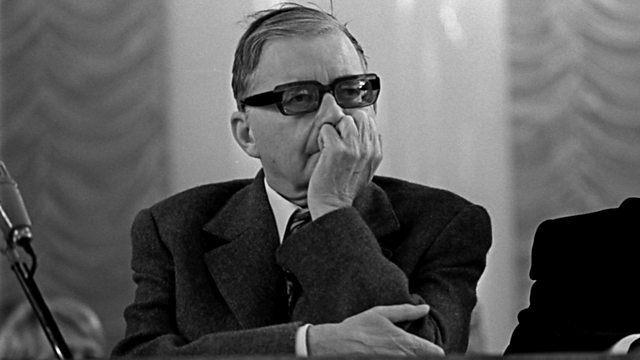The terrible loss of Christopher Falzone, 29
mainIt is five years since the world last heard the phenomenal talent of Christopher Falzone, a troubled American pianist who enjoyed the support of Martha Argerich among others.
Christopher seemed destined for great things. In the summer of 2014 he was consigned to a mental hospital in Geneva. In October he died in a leap from the 10th floor.

Aspects of the case remain troubling. A second musical suicide this year at a Geneva mental hospital raises further questions about safety.
May Christopher’s memory be a blessing.






I knew him to be a deeply troubled young man in deeply troubling situations that only worsened over time. Let him rest in peace. His widow needs to find her own life and move on.
Kolb Low, Kale Slow, Kohlrabi Slow, Kohl Slow is a Winner of 2002 Coleslaw and Potato Salad Invitational, held in Mississippi.
And the Grand Polish Sauerkraut Competition where one had to perform the entire works of Chopin for piano in a vat of sauerkraut.
Absolutely beyond dreadful.
a tragedy that’s become commonplace, alas:
https://www.youtube.com/watch?time_continue=10&v=dAoRmrqvr4s
2:23
Marketing of Madness Official Trailer
Food Matters
https://wakeup-world.com/2016/07/24/ssri-antidepressants-put-patients-at-clear-risk-of-suicide/
SSRI Antidepressants Put Patients at Clear Risk of Suicide
By Dr. Joseph Mercola
It is now estimated that 1 in 8 Americans are on serotonin reuptake inhibitors (SSRI) antidepressants [1] and a shocking 1 in 4 among women in their 40s and 50s.[2] Yet the U.S. suicide rate of 38,000 a year has never been higher.[3]
Clearly the glut of SSRI prescriptions is not lowering the national suicide rate; rather there is compelling evidence that the popular pills are actually contributing to suicide.
SSRIs and Violence
The first suspicion that SSRIs can cause dangerous and unintended psychiatric effects was a Kentucky shooting in 1989 [4] in which pressman Joseph T. Wesbecker entered his former workplace, Standard Gravure, killed eight people, injured 12 and committed suicide after being prescribed Prozac.
Families of the wounded and killed soon filed a lawsuit against Prozac maker Eli Lilly and Company, claiming the SSRI contributed to the violence. The case went to a jury that sided with Lilly.
Yet three days before the shooting, Wesbecker’s psychiatrist had written “Prozac?” in his patient notes as a possible explanation of his bizarre behavior.
Since the Standard Gravure killings, psychiatrists, drug safety advocates and bereaved families have consistently tried to expose links between SSRIs and suicides but are hampered by mainstream safety data that deny a suicide link.
Study Suggests ‘No Suicide Link’ Is Not to Be Trusted
However, a recent study suggests the “no suicide links” findings are not necessarily to be trusted, noting that: “Therapists should be aware of the lack of proof from RCTs (randomized control trials) that antidepressants prevent suicides and suicide attempts.”[5]
Dr. David Healy, professor of psychiatry at Bangor University and author of 20 books including “The Antidepressant Era,” “The Creation of Psychopharmacology,” “Let Them Eat Prozac,” “Mania,” and “Pharmageddon,” heartily agrees that the SSRI statistics given to the public is problematic.[6]
“People haven’t had access to the data. There have been no publications around it. This is one of the biggest problems on which there’s a huge amount of data, but to which we’ve got little or no access …
If we were getting our drug information from The New York Times instead of medical journals, we would all be a lot safer. When the Times reporter Jayson Blair was found to have fabricated stories, he was history.
But the editors and writers involved with journal fraud still have their jobs and the articles are not even retracted. In fact, Liz Wager, Ph.D., the chair of the Committee on Publication Ethics (COPE) is herself Pharma-linked.”
The COPE website said about Wager,[7] its former chair, “Liz provides writing, editing, training and consultancy services for various pharmaceutical companies” (most recently AstraZeneca, Cephalon, Cordis Corporation, GlaxoSmithKline, Eli Lilly, Janssen-Cilag, Merck Serono, Mundipharma, Norgine, Novo Nordisk, Sanofi Pasteur and Vifor Pharma) at the time of the interview with Healy.
Healy estimates as many as 1,000 to 2,000 Americans on SSRIs kill themselves each year, when they otherwise would not have done so. Violent acts against others and birth defects are also linked to the pills, he says.
Suicides Linked to Antidepressants Number in the Thousands
Even as high level links between medical editors and the drug industry prevented accurate information from reaching the public, in 1997, drug safety activists launched a website called SSRIstories.com,[8] which archived credible and published reports that cite the role of SSRIs and related antidepressants in suicides and other violent behavior.
There are now thousands of entries. “The kind of energy, rage and insanity seen in a lot of crimes today was not seen before SSRIs appeared,” said Rosie Meysenburg, a founder of the website in an interview shortly before her death.[9]
In addition to the thousands of suicides, “there are two cases of women on the SSRI Stories site who stab a man close to 200 times and a case of a man who stabs his wife over 100 times and then goes next door to the neighbor’s house and stabbed the neighbor’s furniture about 500 times.”
The SSRI stories archive includes people on SSRIs setting themselves on fire, violent elderly people (which is rare) and bizarre cases of kleptomania and female school teachers molesting their minor male students. The common denominator in all the recorded crimes is the drug.
Drug companies routinely blame suicides on the depression that was being treated, not the drugs — but the experiences of patients treated with the same drugs for non-mental indications like pain and the experiences of healthy volunteers cannot be written off as the “disease.”
The Dark Side of Cymbalta
In 2004, 19-year-old Traci Johnson who had no history of mental problems hung herself in the Eli Lilly Clinic in Indianapolis while testing the drug giant’s serotonin–norepinephrine reuptake inhibitor (SNRI) duloxetine, sold under the brand name Cymbalta, a type of antidepressant similar to SSRIs.[10]
The suicide did not delay the drug’s approval and wide use. In 2008, the Journal of Clinical Psychopharmacology describes a 37-year-old man with a stable marriage, stable employment and no history of mental problems trying to kill himself two months after being prescribed Cymbalta for back pain.
“The patient was unable to state exactly why he wanted to commit suicide,” wrote the four physician authors in the report, also noting that the man returned to normal when the drug was stopped.
The authors also report a 63-year-old man with no mental health history becoming suicidal two weeks after being put on Cymbalta for fatigue, insomnia and sadness, yet he too was “unable to explain why he was having thoughts of wanting to die.”
Other cases of healthy people committing suicide on Cymbalta have been reported [11] and many still remember the suicide of Carol Gotbaum at Phoenix’s Sky Harbor International Airport who was on the drug. She was the stepdaughter-in-law of New York City’s public advocate at the time, Betsy Gotbaum.
Writing for Slate, reporter Jeanne Lenzer identified 13 suicides [12] linked to Cymbalta besides Traci Johnson. Eli Lilly wanted to market the drug as a treatment for urinary incontinence too but withdrew its application and would not release the study data to Lenzer, she says. It may well have contained more evidence of suicide side effects.
The Drug Industry Still Fights Black Box Warnings Added in 2004
In 2004,[13] in response to the outcry over antidepressant-linked suicides, the U.S. Food and Drug Administration (FDA) directed drug makers to add a “Black Box” warning to SRRIs and related psychiatric drugs, highlighting suicide risks and the need for close monitoring of children and adolescents for suicidal thoughts and behavior.
“Today’s actions represent FDA’s conclusions about the increased risk of suicidal thoughts and the necessary actions for physicians prescribing these antidepressant drugs and for the children and adolescents taking them.
Our conclusions are based on the latest and best science. They reflect what we heard from our advisory committee last month, as well as what many members of the public have told us,” said Dr. Lester M. Crawford, acting FDA commissioner at the time.
Unfortunately, then and now, drug industry funded doctors have tried to claim that the warnings scare doctors and patients away and heighten suicide. While it would be ridiculous to blame obesity on tighter restriction of obesity drugs, that is essentially what drug industry spokesmen have done with SSRI warnings and continue to do.
Even The New York Times was misled by such disinformation, reporting that SSRI warnings were causing a leap in suicides.
Journalist Alison Bass, however, revealed [14] the paper on which the Times article was based was funded by a $30,000 Pfizer grant. The conclusions about higher suicides also turned out to be wrong because the researcher got his years mixed up.[15]
Contrary to drug industry claims about the warnings, the proportion of children and teens taking antidepressants actually rose in the U.S. after the Black Box was added from more than 1 percent to nearly 2 percent says Dr. Andrea Cipriani, associate professor in the department of psychiatry at the University of Oxford, in England.[16]
Still, both David Shern, Ph.D., president of Mental Health America, a group investigated by Congress for undisclosed industry funding [17] and Dr. Charles Nemeroff, also investigated by Congress, blamed [18] the Black Box warnings for rising suicides. Speaking to ABC News, Nemeroff said:[19]
“I have no doubt that there is such a relationship. The concerns about antidepressant use in children and adolescents have paradoxically resulted in a reduction in their use, and this has contributed to increased suicide rates.”
False Charges About Black Box Warnings Continue
Nemeroff left his post at Emory University in disgrace because of his drug industry links [20] and a National Institutes of Health (NIH) grant he managed was suspended because of the conflicts of interest — a rare occurrence.[21] Nor have the false charges about Black Boxes died down. Here is how a New York Times editorial read just last year.[22]
“Worse, antidepressants, which can be lifesaving, are probably being underused in young people. Their use fell significantly after the FDA issued its so-called black-box warning in 2004, stating that all antidepressants were associated with a risk of increased suicidal feeling, thinking and behavior in adolescents. That warning was later extended to young adults.
It’s not hard to understand why. The FDA’s well-intended warning was alarming to the public and most likely discouraged many patients from taking antidepressants. Physicians, too, were anxious about the admittedly small possible risks posed by antidepressants and were probably more reluctant to prescribe them.
This very small risk of suicidal behavior posed by antidepressant treatment has always been dwarfed by the deadly risk of untreated depression … Parents and teenagers, and their doctors, too, should not be afraid of antidepressants and should know that they can be very helpful. Indeed, with careful use and monitoring, they can be lifesaving. The only thing we should all fear is depression, a natural killer that we can effectively treat.”
Blaming underuse of drugs and falling sales on warnings that made patients or doctors “anxious” is not limited to antidepressants. Recently, industry-funded groups charged that warnings on the bone drugs called bisphosphonates about fractures and osteonecrosis of the jaw were scaring patients and doctors away and denying patients the drugs’ benefits.[23]
SSRIs Ignored in the Extremely High Rate of Suicide in the Military
During the wars in Iraq and Afghanistan, troop suicides were higher than combat fatalities themselves and the majority of the suicides were among troops who had never even deployed.[24] But when a long awaited Army report came out, it largely blamed soldiers themselves for the deaths, especially highlighting illegal drug usage and barely mentioning the huge number of troops on prescription psychoactive drugs. In fact, the word “illicit” appears 150 times in the Army report and “psychiatrist” appears twice.[25]
At the time of the Army report, 73,103 prescriptions for Zoloft had been dispensed to troops, 38,199 for Prozac, 17,830 for Paxil and 12,047 for Cymbalta.[26] In fact 4,994 troops at Fort Bragg alone were reported to be on antidepressants by the Fayetteville Observer.
Four years after the Army report, researchers addressed the military suicides in JAMA Psychiatry [27] again not finding or considering the high prescribing of SSRIs within the military. The authors had financial links to Eli Lilly, GlaxoSmithKline, Ortho-McNeil Pharmaceutical, Janssen-Cilag, Pfizer, Sanofi-Aventis, Shire and Johnson & Johnson.
In a series during the Iraq and Afghanistan wars called “Medicating the Military,” when SSRI use was mushrooming, Military Times reported:[28]
“A Military Times investigation of electronic records obtained from the Defense Logistics Agency shows DLA spent $1.1 billion on common psychiatric and pain medications from 2001 to 2009. It also shows that use of psychiatric medications has increased dramatically — about 76 percent overall, with some drug types more than doubling — since the start of the current wars.
Troops and military health care providers also told Military Times that these medications are being prescribed, consumed, shared and traded in combat zones — despite some restrictions on the deployment of troops using those drugs. The investigation also shows that drugs originally developed to treat bipolar disorder and schizophrenia are now commonly used to treat symptoms of post-traumatic stress disorder, such as headaches, nightmares, nervousness and fits of anger.
Such ‘off-label’ use — prescribing medications to treat conditions for which the drugs were not formally approved by the FDA — is legal and even common. But experts say the lack of proof that these treatments work for other purposes, without fully understanding side effects, raises serious concerns about whether the treatments are safe and effective.”
Many military administrators have unabashed drug company links, like Dr. Matthew Friedman, former executive director of the Veterans Affairs’ National Center for PTSD,[29] who admitted receiving AstraZeneca money in a video on the Center’s site a few years ago (a video since taken down) and served as Pfizer Visiting Professor while helming a government organization.[30]
Recently, the Annals of Internal Medicine ran another study looking at military suicides without finding an antidepressant role. The study’s editors at the Annals had links [31] to Eli Lilly, Pfizer and Johnson & Johnson. Considering all the risks associated with antidepressants, it would be wise to use them as a very last resort. To learn more about safer treatment options, please see my previous article, “Supplements Proven Beneficial for Your Mental Health.”
Sources and References:..
Impressive overview. How peaceful and innocent now seems the oldfashioned sofa treatment of psychoanalysis, the client laying down and the shrink comfortably seated on his armchair with a note pad and pen, seriously listening to the woes of early youth.
Well said John.
They certainly can be over-prescribed. When someone is unhappy with their life, a doctor promptly labels them as “depressed.” They do not allow sadness legitimacy. 5-htp and tyrosine are natural remedies one can use to self-regulate mood and imbalance.
Chris’ passing was, indeed, tragic and a great loss. I remember leading a joyful collaboration with him at Avery Fisher Hall with the Disney Young Musicians Symphony Orchestra in 1999. Here he is at the Hollywood Bowl with the same organization in 1996: https://www.youtube.com/watch?v=Nq-w8F4w92g
I remember meeting him after his recital in a Cleveland church years ago—he seemed shy, kind, and sensitive—may he Rest In Peace
In Christopher’s case, he was most likely on the autism spectrum. He could not socialize with even four people who were completely supportive and friendly. All he could do was play the piano. He received little or no other education due to home schooling. As an adult, he had no freedom and his most basic sense of self was constantly challenged. He never developed an artistic vision of his own. Having a complete lack of direction or sense of control over life is what, I believe, led him to destroy himself. It was the only freedom possible. He was betrayed by the clinic where he sought sanctuary. He was caught between powerful, dominating personalities, and so, like a fragile flower, he was crushed, mentally, emotionally, artistically, and so his spirit sought freedom in death.
Kolb Slaw is fat lonely and old, he doesn’t have his own company of 4 gay people improvising fun games, he wants Christopher to play with him. But we even don’t know Who he is and Why he wants to play with him and How he planned to improve Christopher’s personality and repertoire during those fun-game hours . He didn’t believe that such beautiful and elegant Christopher was not interesting to go with him to gay club and prefer to play piano and he also didn’t believe one would love have to work to do in the order to get there artistically and musically happy. When is that harassment and bear-baiting will end? If you Slow-Cooked-whole-Cauliflower sO chopenisque personality who were sO supportive, I’m not surprised that Christopher escaped even didn’t your toxicity is eternal, get lost! But I really shouldn’t be sarcastic and imagery with you, because you sound autistic on your direct black-white thinking (Christopher unlike were speeding his magnificent colors around people in many ways, sorry with as can rant on and on, unable to see that others are either offended or uninterested) .
i’d like if you kindly tell us more about that concert, what did he played, what was your impression of his interpretations, was he shy in his playing?
Humanity would do well to not become so alarmed by normal responses to trauma that it falls prey to those with concocted solutions, denying that trauma. A little crumb of empathy does more than all of the constructed ideas appeasing such paranoid alarm. A little crumb that brings hope rather than alarm.
The mental health system can’t back up its claim regarding conclusive evidence that mental illness has a biological origin. They couldn’t in 2003 and they haven’t been able to since.
https://mindfreedom.org/mfi-taking-action/mf-hunger-strike/
And their implementation of such ideology has resulted in the current spike in mental illness rather than a decline, upon which they say more of what caused the spike is needed to eradicate what such treatment correlates with causing. One often can’t share clear evidence of this without being regarded as non-compliant, or being disruptive to healing, or even lacking in compassion.
A person in an asylum usually can not even KNOW the truth about psychiatric medications and try to express them, and when they express side effects, they would usually be put on more medications, and if they exhibit side effects from the medications (look at the side effect list of psychiatric medications, and psychiatric symptoms are always listed among them) that’s often seen as a symptom of the alleged disease, and they are again put on more medications. That the only way to get out of such a situation is to act like you believe their ideology was already proven in 1973 with the Rosenham experiment. https://allthatsinteresting.com/rosenhan-experiment It hasn’t changed for the most part, and certainly not to any degree that it logically should have back then, what should have never started. In fact the people from the asylums were so stubborn, that not only could they not tell the difference between people they deemed insane and anyone else, but they reported that they detected that Rosenham supposedly sent more people into the asylum afterwards, which he hadn’t done at all.
The asylum system that’s current, is a corruption of what was started by the Quakers that actually did have very positive results statistically (the current system doesn’t), but then along came those that promoted the constructed ideology that’s current. You can read about this very clearly in Mad in America, a book by Robert Whitaker, chapter two.
And I hope that it doesn’t sound like I’m lacking in empathy for what Christopher went through, because that’s entirely not the case. I’m absolutely shocked, and last night in reading the article, I could have completely broken down, which I just could have done again; but I have heard stories like this SO OFTEN, and they are SO prevalent; so I share what I know hoping that someone somewhere might be able to help someone else by NOT becoming so alarmed that they are thrown into a system that statistically has made everything worse.
more on pHarma’s charade: ‘Psych Meds Cannot Fix Biochemical Imbalances Because There Are No Biochemical Imbalances In The Brains Of Psychiatric Patients – Until The First Dose Of A Psychiatric Drug – with AuthorPeter R. Breggin’
The Real Truth About Health
Published on Aug 5, 2019
https://www.youtube.com/watch?v=V815ZSoGkI0&feature=youtu.be
Jean-Louis Rambour – Tombeau de Christopher Falzone – L’herbe qui tremble
Did you hear about a new poem by well known French poète Jean-Louis Rambour, it was published in 2018? That book has been broadly praised in countless reviews, also all in French https://www.nouvelle-quinzaine-litteraire.fr/mode-lecture/icare-au-piano-1218
Jean-Louis Rambour consacre un tombeau au pianiste Christopher Falzone, un talent fauché en plein vol. Il sera à la Ville aux Livres de Creil les samedi 17 et dimanche 18 novembre.
Sur le plan artistique, le pianiste Christopher Falzone était un prodige. À 8 ans, il donnait son premier concert public devant des milliers de spectateurs. Il était extrêmement habile dans la transposition pour le piano. Il savait aussi adorer et s’avouait véritable disciple de Franz Liszt. Il savait faire sonner sur un seul piano une œuvre de Saint-Saëns composée pour deux instruments; il avait le don de donner l’ampleur d’une symphonie à un trio de Tchaïkovski. La musique contemporaine ne l’effrayait pas non plus; il l’avait embrassée avec passion. Elle s’en était allée toute retournée et comblée. Christopher Falzone avait 29 ans quand il eut la mauvaise idée de sauter par la fenêtre du dixième étage de l’unité psychiatrique de l’hôpital de Genève peut-être à cause du traitement médicamenteux de cheval qu’on lui imposait; peut-être seulement à cause de ses fortes tendances suicidaires, selon certains. À moins qu’il se fût tué par amour car, marié à une femme de vingt ans plus âgée que lui, des gens voyaient ça d’un mauvais œil, comme cette infirmière rousse qui s’obstinait méchamment et bêtement – alors qu’elle était au courant – à lui dire: «Vous avez la visite de votre mère.»
Émouvant phénomène
Jean-Louis Rambour, poète et écrivain sensible, consacre un tombeau à l’émouvant phénomène. «Le destin de Christopher Falzone m’a attiré à cause d’un article lu dans un mensuel de musique classique qui contient une rubrique intitulée: «Ils nous ont quittés»…» résume l’auteur qui longtemps a résidé et enseigné dans le Santerre. Chaque mois je la lis et, d’habitude, c’est pour apprendre des choses sur des musiciens de la génération qui me précède. Or, là, il s’agissait d’un jeune homme de 29 ans dont je savais qu’il venait d’obtenir le premier prix au concours international de piano d’Orléans, trois ans plus tôt. Je me suis donc attardé sur cet article parce que le fait divers était exceptionnel. Mais, comme beaucoup d’autres informations, il s’est rangé dans un coin de ma mémoire où il aurait pu rester ad vitam aeternam. J’ai dû me dire: «Quel gâchis!».Et puis c’est tout. Or, cet immense gâchis, je l’ai vécu au plus près, 15 mois plus tard, avec la mort de mon jeune homme à moi, mon fils François. J’ai donc eu l’idée de mêler les deux destins, de faire un nouveau livre sur la mort de François, qui parle de lui sans jamais en parler.» Quand on lui demande pourquoi a-t-il opté entre une forme située entre la poésie et la prose, il répond: «Je suis persuadé qu’en 40 pages, un texte obéissant au fonctionnement, au caractère continu de la prose n’aurait pas dit autant de choses.
La prose, c’est quelque chose qui dure, s’allonge, c’est une construction horizontale tandis que la poésie est une élévation.».
Ce petit livre est un bijou d’émotion et de haute littérature comme Jean-Louis Rambour sait nous en donner à lire. PHILIPPE LACOCHE
Tombeau de Christopher Falzone, Jean-Louis Rambour; peintures de Renaud Allirand; éd. L’Herbe qui tremble; 64 pages; 13€.
Nous avons eu le plaisir de recevoir le poète Jean-Louis Rambour, dont la particularité est sans doute sa capacité a passé d’un genre à un autre. A la fois, poète, romancier, novelliste, il a également publié de nombreux textes dans des revues et journaux. Pour cette neuvième émission de Radio METEOR, il a bien voulu accepter de poser sa plume pour venir nous parler de son travail d’écriture, et notamment de l’un de ses derniers ouvrages : « Tombeau de Christopher Falzone » édité par « L’herbe qui tremble ». http://www.radiocampusamiens.fr/radio-meteor-emission-du-14-mai-2019-avec-jean-louis-rambour/?fbclid=IwAR2eDqkuEHmc4IdftcKWvqSS5cDHBJL2Mds_ky4VEvufnJ4Zh0dxcEi8IpY
In “Notes” number of documents at each level in a view: https://www.facebook.com/notes/christophers-international-fanclub/fun%C3%A9railles-%C3%A0-la-mozart-christopher/1036936373051211/